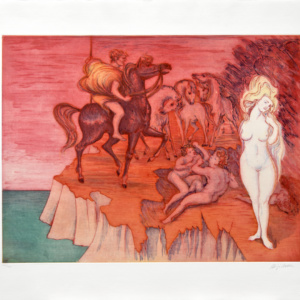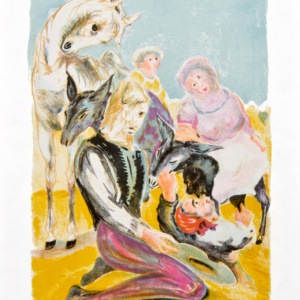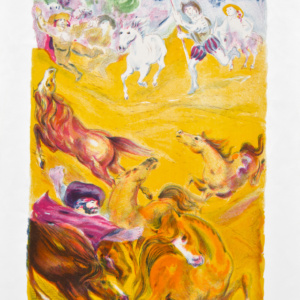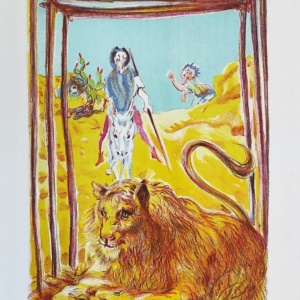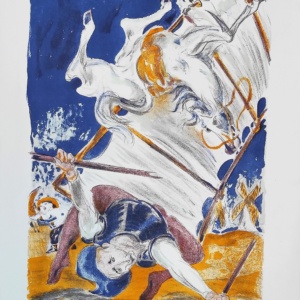Aligi Sassu
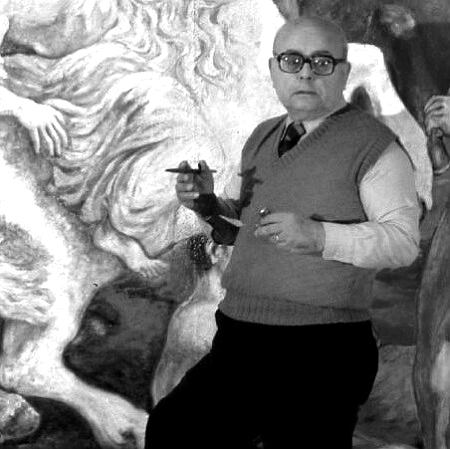
ART PRINTS
ARTISTS
Aligi Sassu was born in Milan in 1912. In 1921, his family moved back to Thiesi, in Sardinia, his father’s birthplace, and settled there for three years. It was there that he first encountered the horses and the vivid colours of the Mediterranean landscape that characterize his pictorial language. Back in Milan, the friendship between his father and Carlo Carrà led him to Futurism, and in 1928, Bruno Munari introduced him to Filippo Tommaso Marinetti, who recommended he exhibit at the Venice Biennale.
In 1929, he enrolled at the prestigious Brera Academy, where he met Lucio Fontana, although financial difficulties forced him to abandon his studies. In the late 1920s and early 1930s, he exhibited some of his works for the first time in two prestigious art galleries in Milan. In 1934, he spent three months in Paris, where he gained a deeper knowledge of the Impressionist painters and also became active in the anti-Fascist movement. Due to his political views and his role in an underground press, he was arrested in 1937 and sent first to the Roman prison of Regina Coeli, and then to Fossano, near Cuneo. He was released in 1938 largely thanks to Marinetti, who arranged for him to receive a royal pardon. He was, however, kept under high security surveillance, which prevented him from attending public places or exhibiting his works. In the years of his imprisonment, the cultural and artistic movement Corrente was founded in Milan and he joined it in 1941, presenting an exhibition at the Bottega di Corrente. In those years he lived in Zorzino, on Lake Iseo. After the war, he moved to Milan, and then, in 1947, to Castel Cabiaglio, near Varese, and shortly afterwards to Albissola, on the Ligurian coast. In 1954, during a stay in Vallauris, France, he met Pablo Picasso for the first time. In 1964, he bought a house on Majorca, an island whose colours and landscapes reminded him of Sardinia; for this reason, it was a constant love for the rest of his life.
Among his most important exhibitions were the retrospectives held at Palazzo dei Diamanti in Ferrara, the National Museum of Castel Sant’Angelo in Rome and the Royal Palace of Milan (all in 1984), his solo shows at the Rome Quadrennial and the Milan Triennial in 1986, and the retrospective at Palazzo Strozzi in Florence in 1999. Some works of his series The Divine Comedy were acquired by the Pushkin State Museum of Fine Arts in Moscow, and he created a 150-meter ceramic mural for the headquarters of the European Parliament in Brussels. Among the most important awards he received were his appointment as Knight of the Grand Cross of the Italian Republic in 1995 and a posthumous Gold Medal of Merit for Culture and Art conferred by the President of the Italian Republic in 2005. His artwork has been exhibited in Spain, Germany, Canada, Russia, Brazil, Colombia, Argentina, and Switzerland. Following the artist’s donation of a core of approximately 360 works to the city of Lugano, the foundation that bears his name was established there in 1996. Sassu died in his home in Can Marimon in Pollença on Majorca in 2000.



